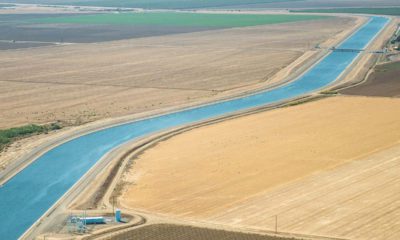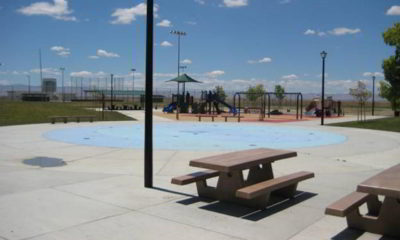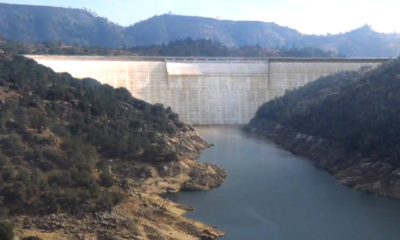Published
4 years agoon
An annual search for a tiny endangered and contentious fish in the sprawling California Delta has once again come up empty.
The state’s annual Fall Midwater Trawl Survey found no delta smelt in September’s sampling of the critical waterway. The last time the rare fish turned up in a survey was in October 2017 when just two were found.
Hoping to reverse the recent trend, the Westlands Water District and the California Department of Water Resources announced the completion of a Delta habitat restoration project on Wednesday.
The project restored and enhanced approximately 2,100 acres of former cattle pastureland in the Lower Yolo Bypass southwest of Sacramento into tidal marsh, riparian, and upland buffer habitat designed to provide food and shelter for native fish, including smelt and salmon.
But, this doesn’t necessarily mean more water will be pumped through the Central Valley Water Project any time soon for agriculture and residential use.

“I would say that the regulations that govern the operations of both the Central Valley Project and the state water project will continue.”–Westland Water District Chief Operating Officer Jose Gutierrez
The Lower Yolo Restoration Project has four primary objectives.
“Westlands Water District has long believed that restoration of water supplies for large areas of California requires that we address all of the factors that limit the abundance of native, at-risk fish species in the Delta,” said Tom Birmingham, Westlands’ General Manager in a press release.

“I would add that, as you said, the focus of this project is on really restoring habitat for the benefit of the fish and other wildlife species in the delta.”–Ted Craddock, DWR deputy director
GV Wire℠ joined a virtual press conference announcing the completion of the project.
When we asked whether this new habitat for delta smelt will now allow the state of California to send more water to the Central Valley, the collective answer seemed to be ‘no.’
“I would say that the regulations that govern the operations of both the Central Valley project and the state water project will continue,” said Westlands Water District Chief Operating Officer Jose Gutierrez.
“I would add that, as you said, the focus of this project is on really restoring habitat for the benefit of the fish and other wildlife species in the delta,” said DWR Deputy Director Ted Craddock.
Westlands purchased the Lower Yolo Ranch property in 2007 with the intention of restoring the property for rearing, breeding and providing refuge habitats for native species, including smelt and salmonids.
Although it took approximately 13 years to plan and permit the project, the construction work to restore the property was completed in just about three months. Westlands invested nearly $9 million to construct the project.
In total, the project comprises:


New Westlands Water District Board Member Appointed


Westlands Water District, Facing a Board Vacancy, Meets Tuesday to Discuss Options


Water Agency’s Land Donation Will Benefit Mendota Park Expansion


Prospective Westlands Water Board Members Look Past Legal Challenges To Get Water, Focusing on Innovation


Toxic Algae Warnings Issued for 2 Valley Waterways Ahead of Hot Weekend


Temperance Flat Dam Put on the Shelf Indefinitely





Mark Borba
November 22, 2020 at 9:20 am
$9 million and 13 years later…..and not a “THANK YOU, WESTLANDS” or an increased water flow in sight! So, on to the next era of lawsuits, watching public-interest organization, consultants, self-proclaimed environmentalist groups reap millions $$$$…while California’s ag industry shoulders the blame for mismanagement of the State’s water resources.